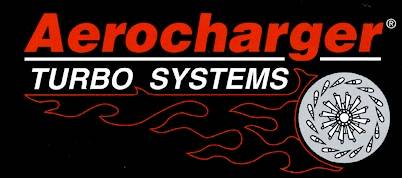



Sonderaufbau Turbo-Harley
Harley-Davidson
«Master Blaster-Turbo-Harley»
Dieses Bike präsentiere ich auf jeder SR-Rally!
Turbochargers, by design, use the flow and expansion of exhaust gases to rotate a turbine wheel, which in turn spins a compressor wheel within the intake stream of the engine. This wheel creates boost by compressing the air and increasing the engine’s mass flow rate. This process however, is directly relative to how fast the turbine wheel is spun by the exhaust gasses passing by it. Boost can only be made once these wheels are spinning up to certain speeds and compression can occur. The delay before boost is built is simply known as turbo lag.
In 1976 a group of turbomachinery engineers wanted to improve on the design of conventional turbochargers and eliminate turbo lag from the equation. The end result was the Aerocharger®, a turbo which utilizes exhaust gases in the most efficient way possible to build boost instantly. This was achieved through a Variable Area Turbine Nozzle (VATN) design for the turbine section. VATN is a series of vanes that optimize the flow area of the turbine by adapting to the exhaust gases. By doing this, the turbine wheel is able to operate at peak efficiency throughout a wide RPM range, something that has never been achieved before. This also eliminates the need for a wastegate, which conventional turbochargers rely upon to control boost. Instead, the vanes automatically adjust the flow area and backpressure to perfectly match the torque requirements of the compressor wheel to produce the desired boost. Eliminating the need for a wastgate means eliminating extra cost in your turbo system. A typical high-performance external wastegate is commonly priced anywhere from $250-$1000 depending on brand and size. Boost is controlled via various shims and spring designs within the vane controller. This also eliminates the need for a manual or electronic boost controller which can also get very costly. These are additional components that are not necessary with an Aerocharger as it relies on no external components to perform.
A unique self-contained oil system was also created for the Aerocharger® which lubricates the ball bearings in a fine mist of oil. Since the oiling system is separate from the engine, a proper lubricant can be used for the precision ball bearings instead of using oil formulated for engines. This differs from conventional turbochargers that use a flooded bearing system which rely upon the engine’s lubrication system. By avoiding the use of a flooded design a virtually frictionless, self-contained bearing lubrication system was achieved.
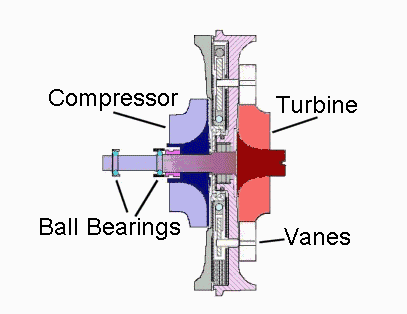
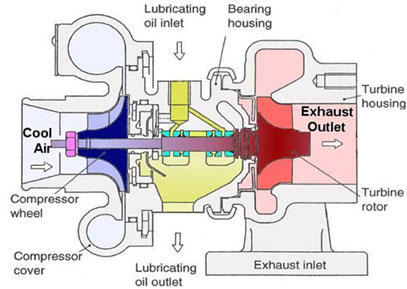
Conventional turbochargers use a flooded
journal or ball type bearing centered between the turbine and compressor
housings. This bearing assembly is plumbed into the engines lubrication system
where hot motor oil is constantly pumped through it. In many cases, particularly
production turbocharged engines, this bearing assembly has separate cavities for
the engine’s coolant to flow through to aid in cooling the bearing as well.
Motor oil is not particularly designed for high-speed, ball-bearing aftermarket
turbochargers, thus falling short of providing the most ideal lubrication
conditions. This type of lubrication system is also less than desirable when it
comes to hot shutdowns. When a turbocharged engine has been run hard the oil and
turbo reach extreme temperatures. Shutting the engine off during these
conditions stops the flow of oil, which allows the oil to sit in the turbo and
cook leading to bearing wear and premature turbo failure. A common remedy for
this would be to allow the engine to idle for a period of time before shut down,
or to apply a turbo timer, which does this automatically.
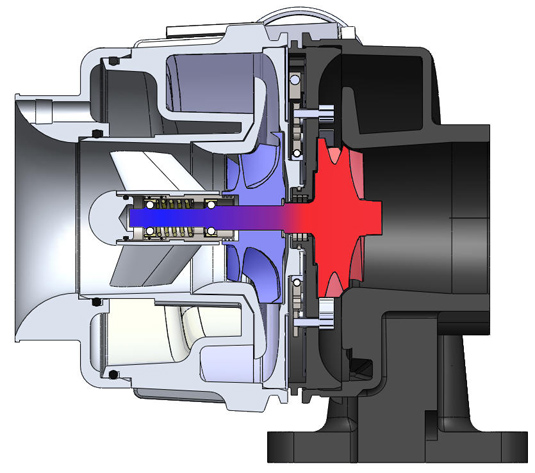
The proper solution for this issue is a
turbocharger that does not fall victim to these circumstances. The bearing
assembly within any Aerocharger® is specifically designed to cater to these
needs. Viewing the diagrams on this page it is first easy to see the difference
in location of the bearing assembly between an Aerocharger® and a conventional
turbocharger. With the Aerocharger® the bearing assembly is located in the
coolest location of the turbocharger: the compressor housing inlet. Fresh air is
drawn in around the bearing, effectively drawing heat away from the bearing
assembly at all times.
Lubrication of this bearing design is also far different from conventional
turbochargers. A cavity is built into the front portion of the compressor
housing. A specially formulated high-speed bearing oil resides within the
cavity. This oil is transferred to the ceramic ball-bearings via a pair of wicks
through which a mist of oil is drawn to lubricate the bearings. Due to the fact
that only a light mist of oil is lubricating the bearings, as apposed to the
bearings being flooded, the amount of drag on the bearings is significantly
reduced (see charts for comparisons).
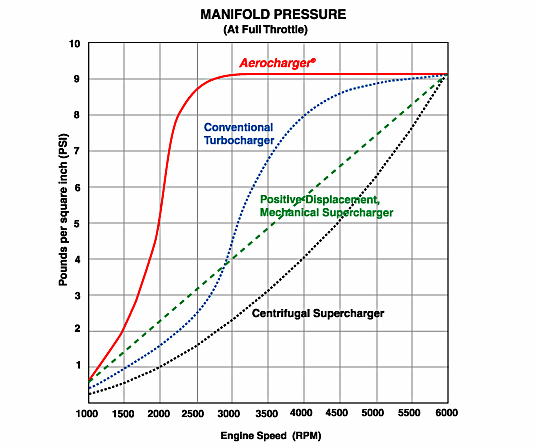
Low rolling resistance coupled with a low-mass rotating assembly and VATN technology is why turbo-lag is virtually non-existent with the Aerocharger®. This also eliminates the need for a turbo timer as the bearings are low drag and hot oil cannot cook the bearings like conventional turbos. Therefore hot shut-downs are not longer and issue and a turbo timer is another component you will not have a need to purchase. A further advantage of this self-contained lubrication system is the fact that the turbo is no longer reliant upon being lubricated by the engine itself. There are no high pressure or lines or seals to fail and reduced oil leakage into the engine for low particulate emissions. This also allows for more mounting options to be available for the turbo including both horizontal and vertical installations.
This oil system has been proven not only over several decades of aftermarket installations, but also on military applications where units have logged over 35,000 hours at 83K RPM which is the equivalent of full boost for most applications. The combined results of both technologies allow for optimum reliability, vastly superior performance, and flexible installation. Most importantly boost is achieved virtually instantly.
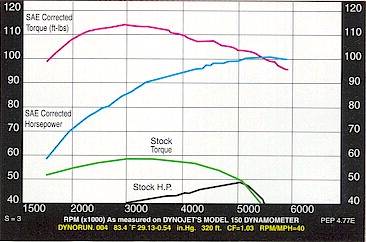
The patented Aerocharger turbocharger uses revolutionary variable vane geometry, the world's lowest mass turbine wheels, and ultra low-friction mist-lubed roller-skate-like ball bearings to deliver instant boost pressure from idle to redline. Most importantly, a 12 psi boost setting gets you 12 psi at 3000 RPM, where you need it most! Self-lubrication means no overheated engine oil. The engine remains stock, so mileage, reliability, and resale value are retained.